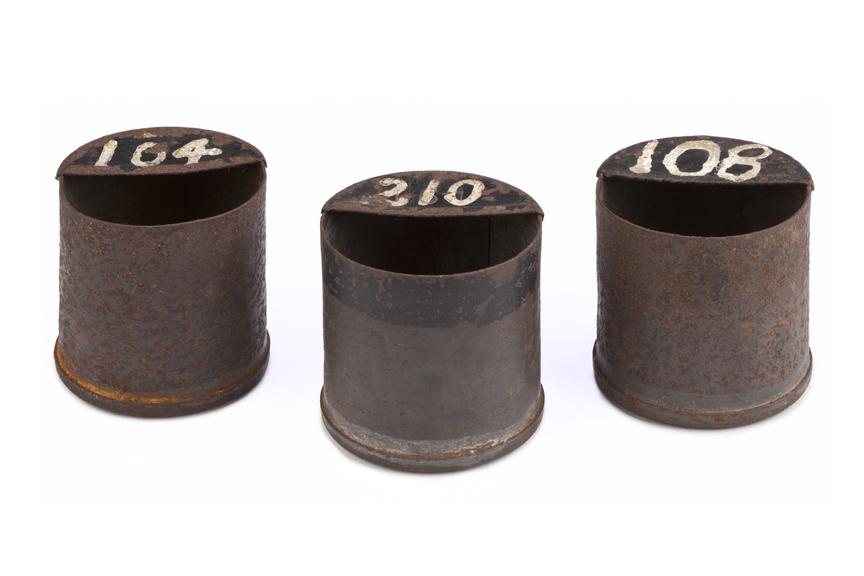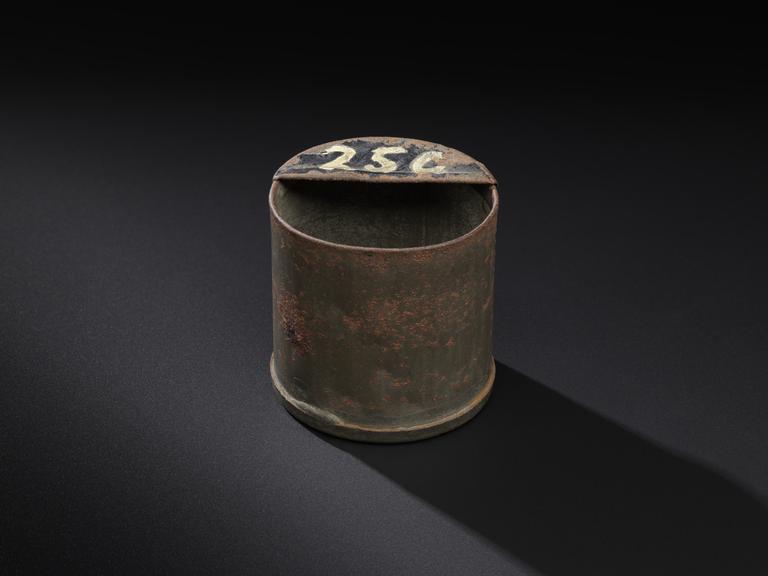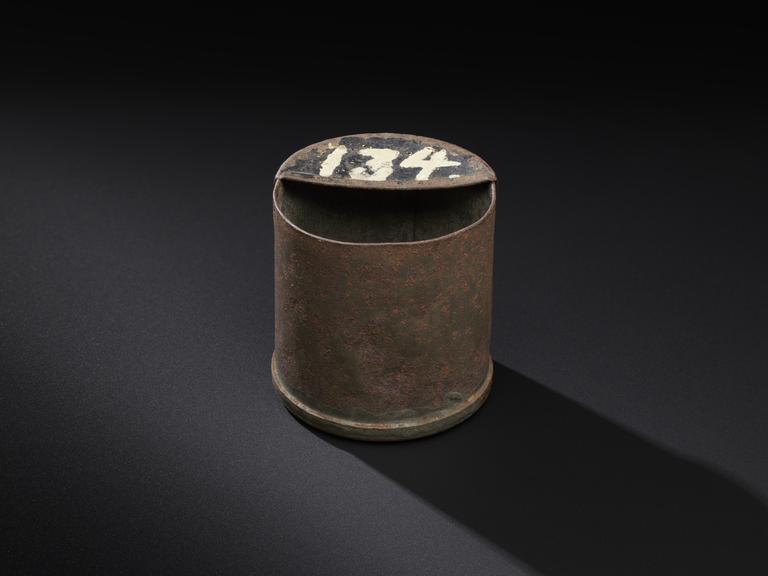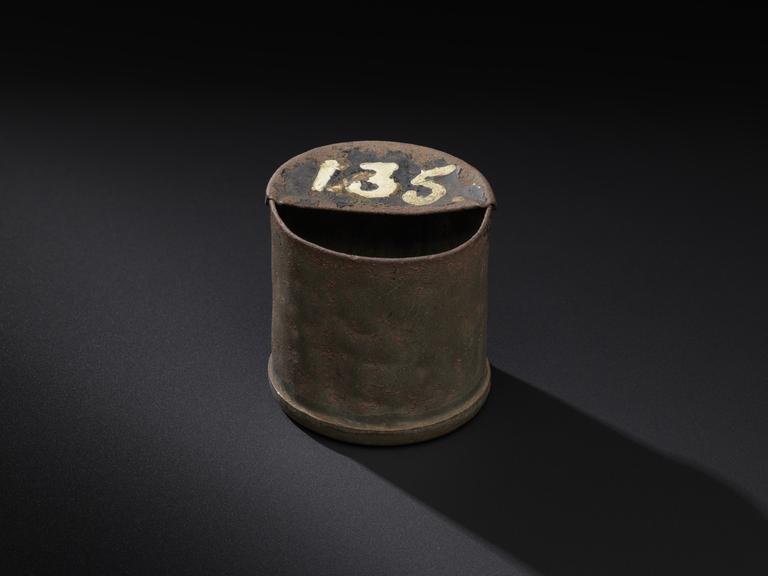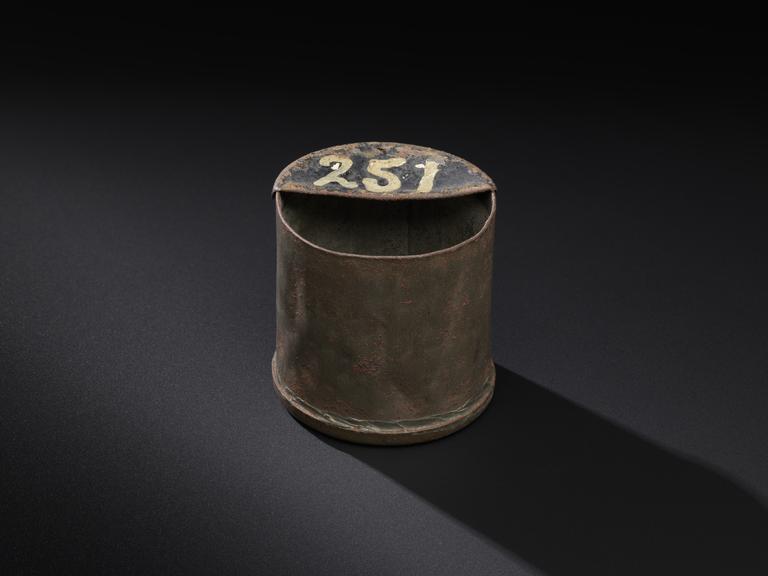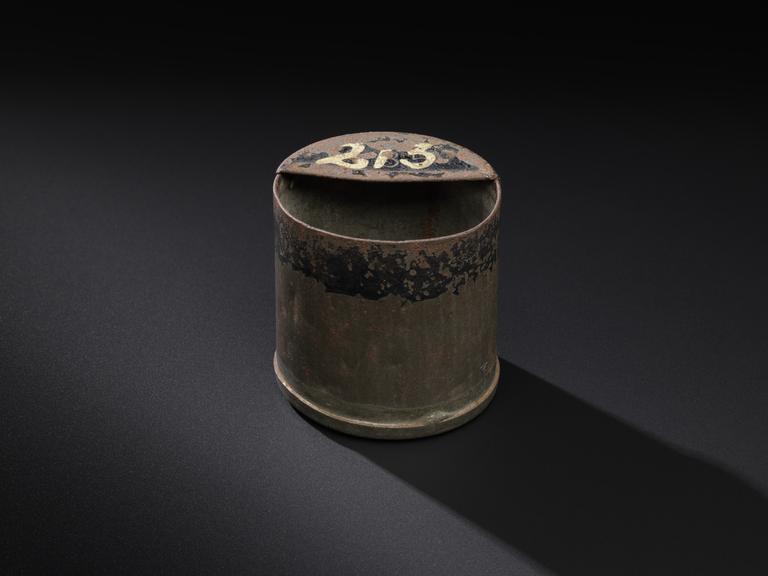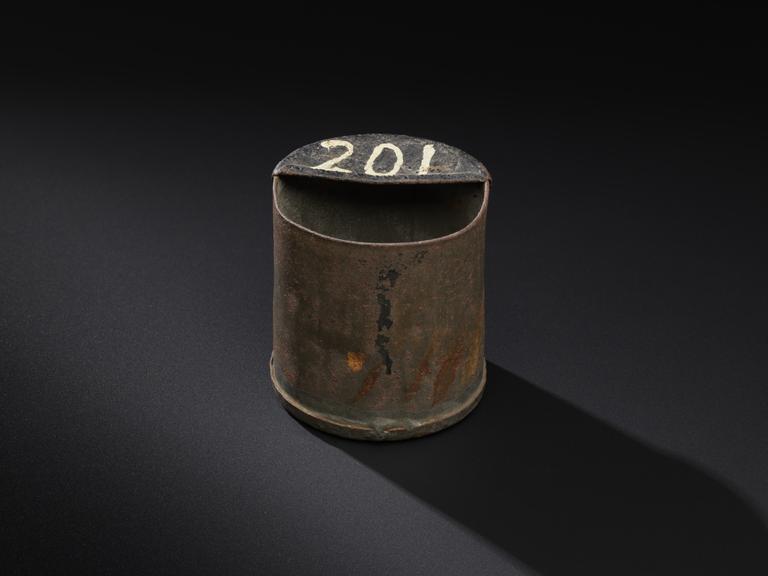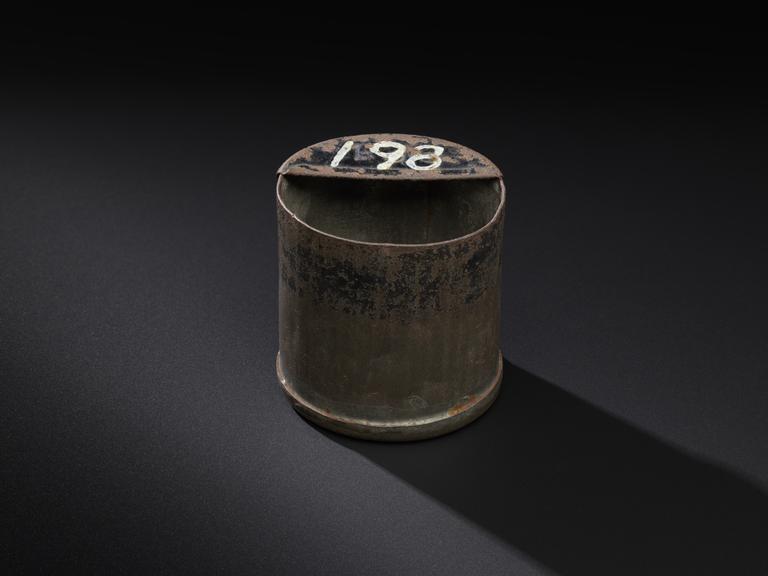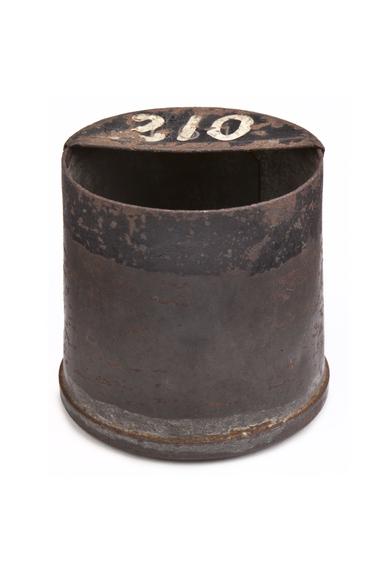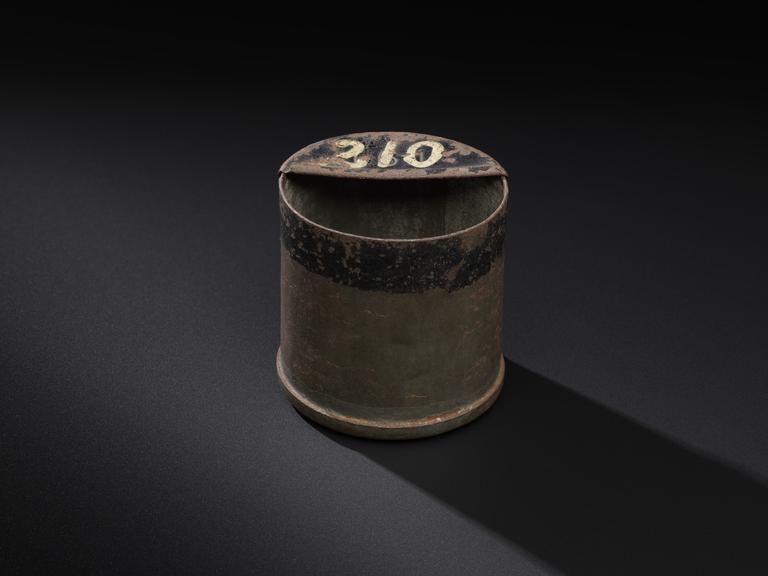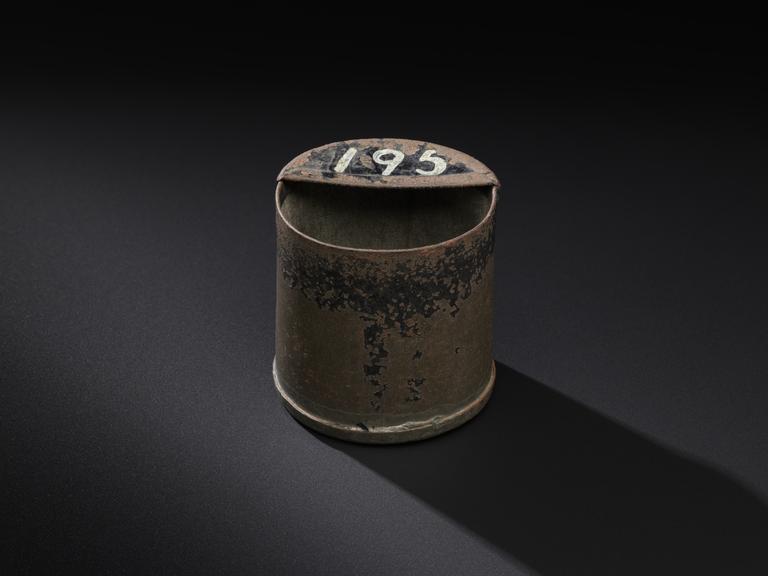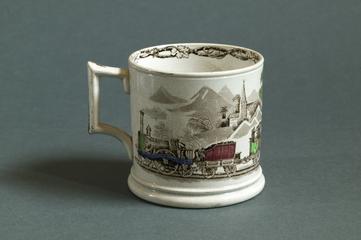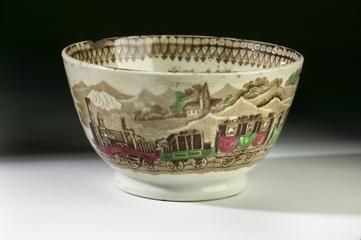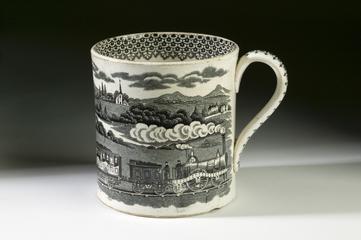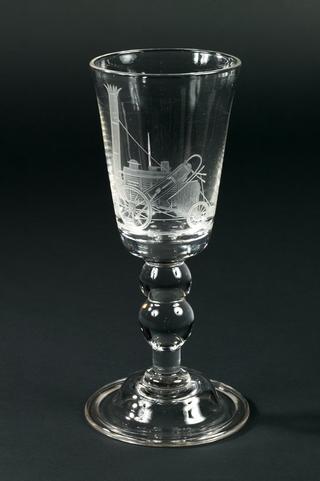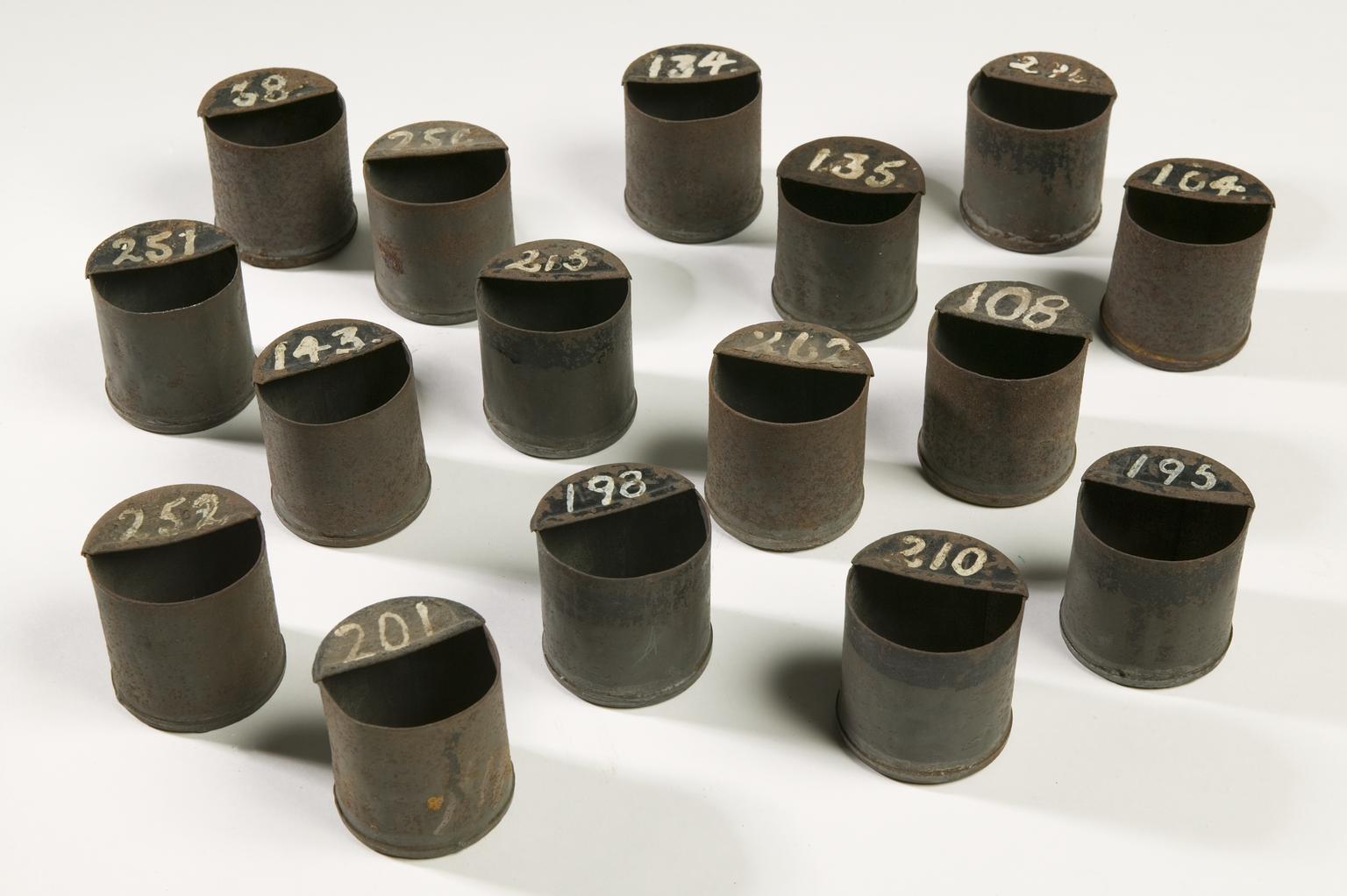
Wage tin
One of a group of sixteen wage tins from Liverpool Road Railway Station, marked '38'.
More
Workers at Liverpool Road Station collected their weekly wages from these tins. The railway, which opened in 1830, connected industrial Manchester with the port of Liverpool. Workers at the bustling station unloaded goods like cotton and coal from wagons for Manchester’s factories. They also loaded finished products for shipment to Liverpool and the rest of the world. In 1850, warehouse workers earned a weekly wage of around £1. This sum could feed and house their families for a week.
- Materials:
- tin (metal)
- Object Number:
- Y2000.37.1/4/1
- type:
- wage tin
- Image ©
- The Board of Trustees of the Science Museum




